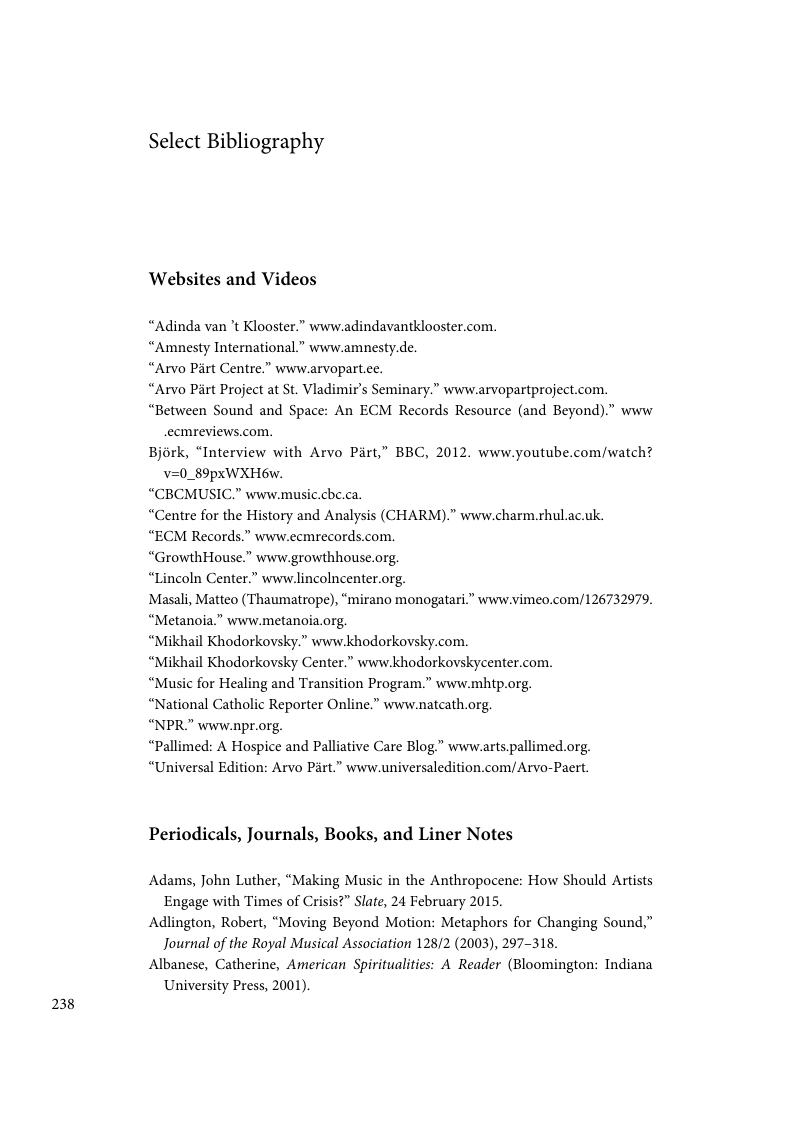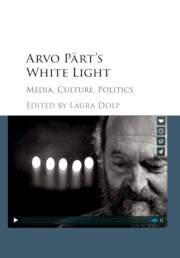Book contents
- Arvo Pärt’s White Light
- Arvo Pärt’s White Light
- Copyright page
- Dedication
- Contents
- Figures
- Tables
- Musical Examples
- Contributors
- Acknowledgments
- Editor’s Notes
- 1 Introduction
- 2 Empathy and Tintinnabuli Music in Film
- 3 Pärt and the Sound of One-Hand Clapping
- 4 Pärt and the Experience of the Neutral
- 5 Ethos and the Industry of Culture
- 6 An Ethnography of Spirituality
- 7 Politics and Protest
- 8 Sonic Embodiment
- 9 Performing Pärt
- Select Bibliography
- Index
- References
Select Bibliography
Published online by Cambridge University Press: 05 July 2017
- Arvo Pärt’s White Light
- Arvo Pärt’s White Light
- Copyright page
- Dedication
- Contents
- Figures
- Tables
- Musical Examples
- Contributors
- Acknowledgments
- Editor’s Notes
- 1 Introduction
- 2 Empathy and Tintinnabuli Music in Film
- 3 Pärt and the Sound of One-Hand Clapping
- 4 Pärt and the Experience of the Neutral
- 5 Ethos and the Industry of Culture
- 6 An Ethnography of Spirituality
- 7 Politics and Protest
- 8 Sonic Embodiment
- 9 Performing Pärt
- Select Bibliography
- Index
- References
Summary

- Type
- Chapter
- Information
- Arvo Pärt's White LightMedia, Culture, Politics, pp. 238 - 255Publisher: Cambridge University PressPrint publication year: 2017

